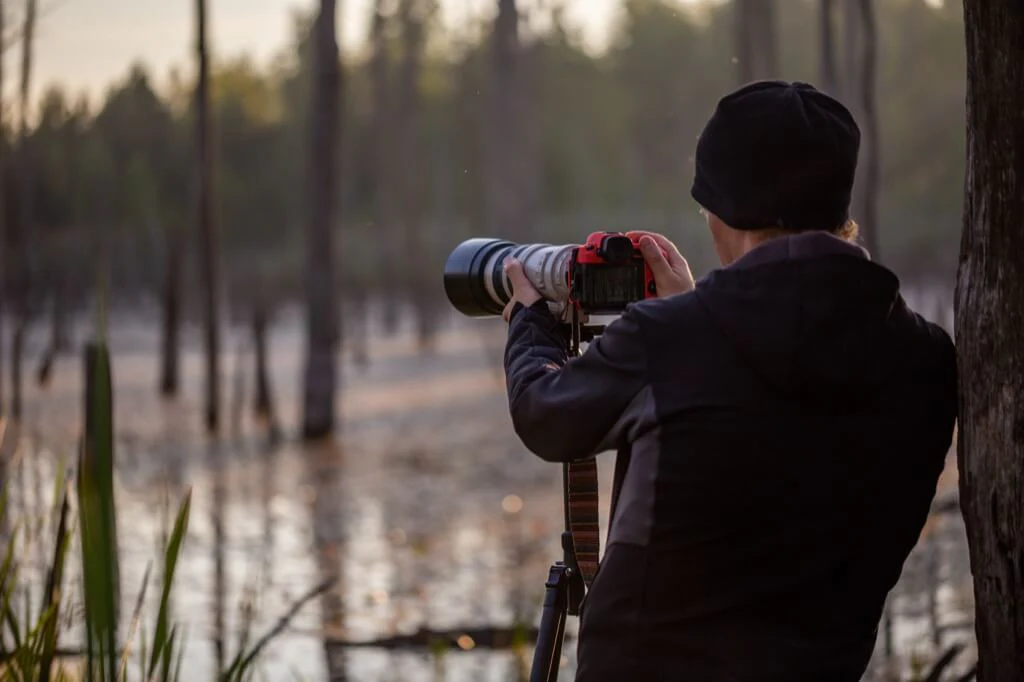
Capturing images in an unusual way has always been of interest to me and I frequently use the technique of intentional camera movement (ICM) to achieve an extraordinary effect.
This is a photographic effect in which the camera is rotated or moved in a horizontal, diagonal, or vertical direction while photographing a static object.
Although the camera can be hand-held or mounted on a tripod, I usually prefer using a tripod.
he right combination of shutter speed, aperture setting, and ISO setting in combination with the actual camera movement will produce the desired blur and an artistic abstraction of the scenery. Suppressing some or all of the details in the scene is my primary photographic goal.
“Sharpness is a bourgeois concept.” – Henri Cartier-Bresson
A long enough shutter speed is the key ingredient for intentional camera movement and allows the camera to paint the photographic object in abstract form. Multiple camera options maximize shutter speed.
Low light is a natural source, but ICM can also be used in good lighting conditions by fitting a polarizing and/or neutral density filter to the lens.
I usually start out choosing the lowest ISO setting combined with the smallest aperture setting (largest f-stop number) my camera has to offer. These camera settings will result in the slowest exposure times.
I prefer the polarizing option over a neutral density filter because it boosts color and balances the contrast; it eliminates glare and reflections.
Think of the polarizing filter as sunglasses for your camera. Overall, these filters increase color saturation, boost blue sky, add cloud contrast, control reflections, and add neutral density to lengthen exposure times for blurred, impressionistic images.
The polarizer often provides me the low shutter speeds necessary to achieve striking abstractions, while the photograph and color still pop.
To further lower exposure times, I might add neutral density filters of various grades. Anything between 1/30 second and multiple seconds can produce interesting and appealing ICM photos.
I recommend starting with slower shutter speeds, such as 1/30 to 1/2 second, before experimenting with multiple second exposure times.
“It is an illusion that photos are made with the camera,
they are made with the eye, heart & head.” – Henri Cartier-Bresson
The Advantages Of Intentional Camera Movement
One of the other great advantages of ICM is its independence from weather. When you’re performing ICM, you don’t always need to wait for the perfect morning or evening light. As with traditional photography, golden light will enhance photos, but it’s not the ultimate key to success.
Side lighting works well, because it defines one side of the photographic subject more than the other, thereby adding more interest to the overall composition.
Trees are among my favorite ICM photography objects and I generally pan in a vertical direction–in line with the tree trunks. Flowers, landscapes, seascapes, and buildings are best panned sideways following the horizon. I also experimented with moving the camera up and down to capture flowers, or I rotate the camera to capture tree canopies in fall and spring.
Smoothness of the final image is another important ingredient that is achieved by continuous movement beyond the closure of the shutter speed.
I stopped counting my failed attempts in which I hesitated and interrupted a smooth movement, therefore producing unusable photos.
Ideally, you should start moving the camera, release the camera shutter, and keep panning beyond the closure of the shutter. A camera timer (two- second setting) may help to produce a steadier and smoother abstraction while you’re moving the camera.

 Admin
Admin
Leave A Reply
Your email address will not be published. Required fields are marked *